Translucent Design (CFW 58)
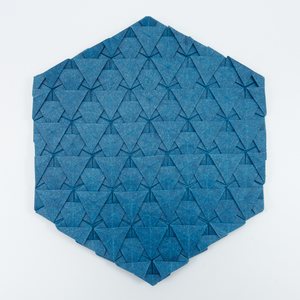
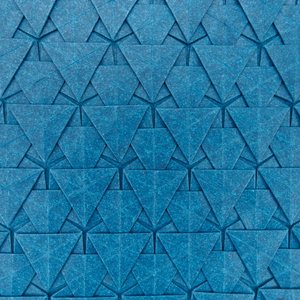
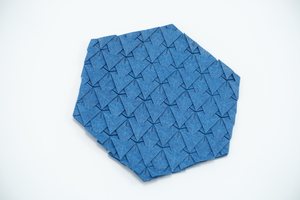
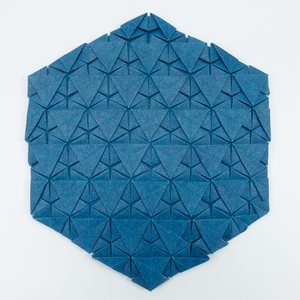
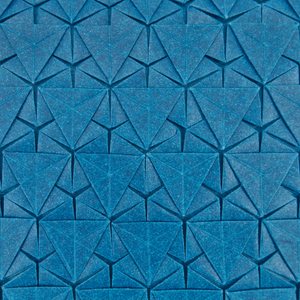
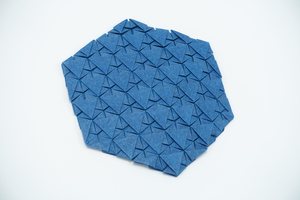
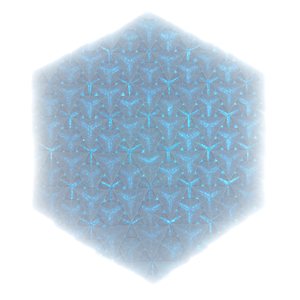
This is one of Fujimoto’s translucent designs, a name he used for many of his tessellations. Folded from rare blue Elephant Hide paper, this work is not very much translucent, but on the other hand this thick paper shows the texture of the model well in reflected light.
Front and back feature somewhat different patterns, both involving equilateral triangles. The way I know which side should be considered front and which back is I got my hands on a picture of this design folded by Fujimoto (see below) and since he used duo paper, I assumed front was the color side.
There are no instructions for this model in Fujimoto’s books apart from pictures of finished model in strong back-light and of rather poor quality (Twist Origami I, page 33; Invitation to Creative Playing with Origami, page 163). Fortunately, thanks to Satoko Saito, I also got hold of a picture of another fold by Fujimoto himself, and that one was a color picture, in reflected light, and of much higher quality, making the reverse-engineering much easier. In a way, this design can be viewed as a triangle twist tessellation with modified pleat assignment.
Comments